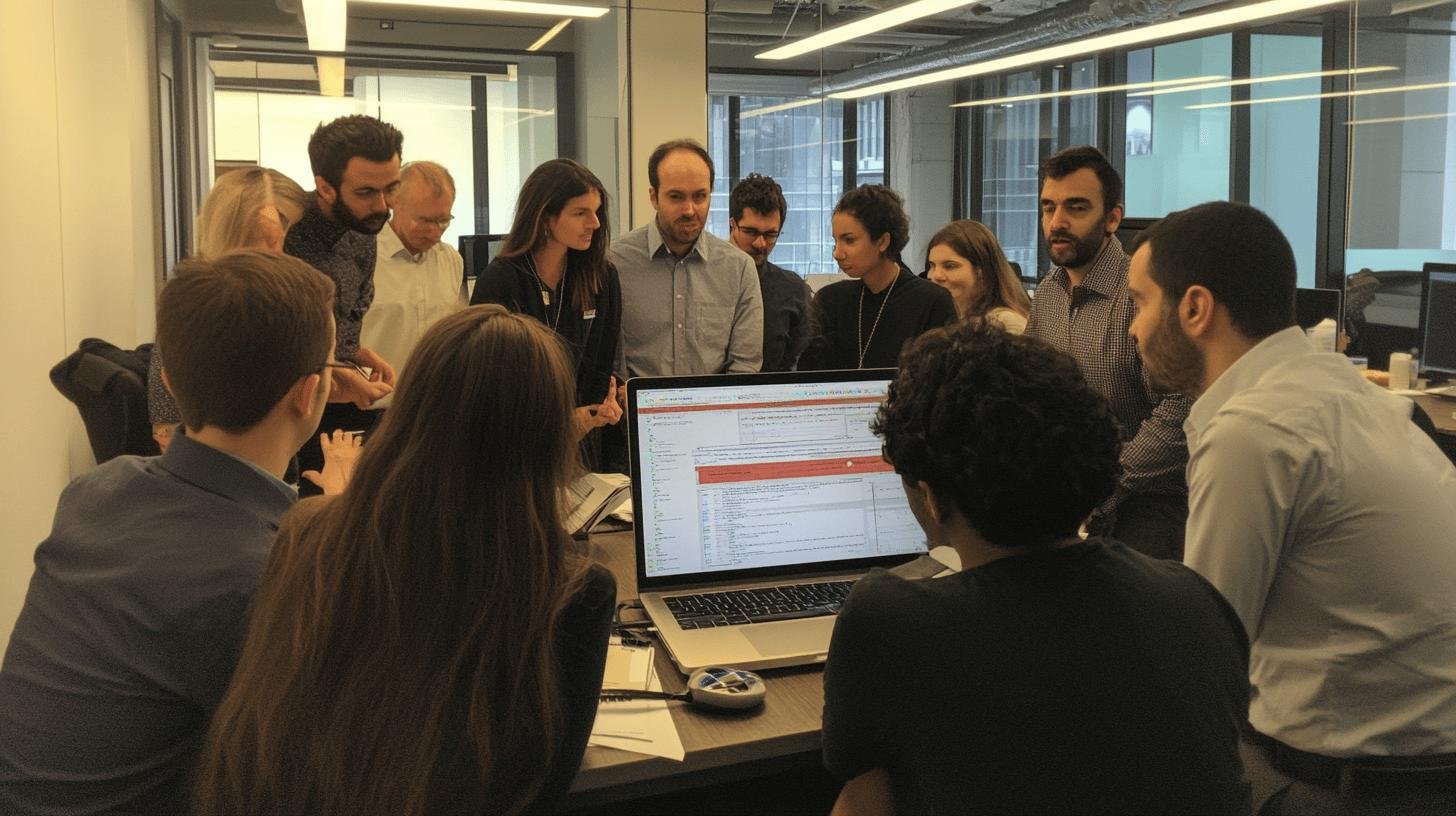Ready to skyrocket your business? AI integration tools might just be what you need! These smart tools connect AI magic with your current systems, making everything run smoother and faster. Popular picks like ClickUp and HubSpot are transforming how businesses operate with unique features such as task automation and data analytics. It’s like giving your team superpowers they never knew they needed! But how do you choose the right one without breaking the bank? Let’s break it down and find out. Grab your coffee, and let’s geek out on this tech!
Popular AI Integration Tools and Their Features
AI integration tools are like magic glue, helping different technologies work together seamlessly. Think of them as superhero sidekicks that automate tasks and analyze data to make your business operations smoother. These tools are crucial because they save time, reduce errors, and let teams focus on creative tasks. Essentially, they’re the ultimate team players that ensure everything runs perfectly.
Let’s explore some popular AI integration tools. First, we have ClickUp, a project management powerhouse offering task automation and over 100 AI prompts to boost productivity. Next is HubSpot, a CRM wizard that automates email and streamlines sales. Finally, Browse AI excels at data fetching and enhancing SEO efforts. Pricing varies from free trials to premium plans, catering to a range of needs. Here’s a snapshot of these fantastic tools:
| Tool | Key Features | Pricing |
|---|---|---|
| ClickUp | Task automation, AI prompts | Starts at $7/month |
| HubSpot | CRM, email automation | Varies, free trial available |
| Browse AI | Data fetching, SEO enhancement | Free version available |
Implementing AI Integration: A Step-by-Step Guide

Thinking of introducing AI into your business? Start by defining your goals. Ask yourself, “What should AI accomplish for me?” Being clear is essential. Once your goals are set, choose the tools that best fit your needs. It’s like finding that perfect puzzle piece that slots into your existing setup.
With the tools in hand, get everyone on board. Train the team and the AI with accurate data. Imagine teaching a pet new tricks; it requires patience and consistency. Begin with simple tasks that won’t disrupt your business if something goes wrong. As comfort grows, gradually tackle more complex tasks.
Keep performance under close watch, as AI isn’t a “set it and forget it” solution. Regularly check how it’s running and make tweaks as needed. It’s like tuning a guitar; you want everything to be in harmony. Monitoring performance metrics ensures your AI maximizes efficiency, creating a smooth-running business.
Case Studies: Successful AI Integration in Businesses
HubSpot demonstrates how AI can supercharge CRM systems. How does it work? HubSpot uses AI to automate tasks like email follow-ups and lead scoring. This precision in decision-making lets sales teams focus more on customer relationships rather than routine tasks. The result? Increased efficiency and better customer engagement through personalized service. HubSpot also offers insights that enable smarter real-time decisions.
Now consider Buffer, the social media guru. Buffer leverages AI to streamline content scheduling and posting. Curious about how they handle all those tweets and posts? AI manages multiple accounts, optimizing posting times for maximum engagement. The advantage? Social media management becomes hassle-free, allowing teams to focus on quality content instead of logistics. Buffer’s AI integration ensures a consistent and compelling online presence with ease.
- Increased productivity by automating routine tasks
- Enhanced customer engagement through personalized experiences
- Improved decision-making with real-time insights
The Future of AI Integration Tools: Trends and Innovations

What’s on the horizon for AI integration? AI-driven innovation is reshaping business operations. Tools are improving their communicative abilities, thanks to smoother system interfaces. Imagine apps chatting like best friends, sharing info, and simplifying your life. This synergy saves time and reduces errors, streamlining operations.
Looking to the future, innovations may make AI even more adaptable, accelerating digital transformation. Envision AI tools effortlessly juggling tasks across platforms, delivering a seamless experience. Businesses could revolutionize data handling, decision-making, and customer engagement through smarter AI. Who knows, AI might become the ultimate multitasker, transforming the digital landscape!
Overcoming Challenges in AI Integration
AI integration isn’t always easy. Two major hurdles are system compatibility and scalability. When systems don’t cooperate, it complicates things. Scalability becomes a challenge as businesses expand; AI needs to keep pace seamlessly. How can we address these issues? Begin with strategic planning and choose adaptable solutions. Regular updates and training are crucial to staying aligned with technology trends.
- Strategic Planning: Establish a clear integration roadmap.
- Regular Updates: Keep your AI tools updated with the latest technologies.
- Ongoing Training: Ensure your team and AI remain in sync.
Conclusion
Exploring AI integration tools like ClickUp, HubSpot, and Browse AI unveils their power to streamline tasks and enhance analytics. Each offers unique features, pricing, and accessibility. Successful implementation begins with identifying business needs, followed by training and ongoing optimization.
Case studies show how these tools improve CRM and social media management, underscoring AI’s role in boosting efficiency and driving innovation. As AI advances, expect increasingly seamless, intelligent systems transforming the digital landscape.
With challenges like compatibility and scalability, careful planning and adaptability are essential. Embrace AI integration tools to elevate your business journey.
FAQ
What are AI integration tools?
AI integration tools help connect AI technologies with other systems. They automate tasks, analyze data, and offer insights, making business operations smoother and more efficient.
How do you integrate with AI?
To integrate with AI, start by assessing your needs, selecting suitable tools, then gradually introduce them. Train teams alongside the AI and keep an eye on performance to tweak as needed.
What are some free AI integration tools?
There are free AI tools online, like ClickUp and HubSpot, which often offer limited free versions or trials. They’re great for testing before committing to paid options.
What is the best AI tool to use?
The “best” tool depends on your needs. Popular choices include HubSpot for CRM and Buffer for social media. They offer solid features for enhancing productivity and engagement.
What are some AI tools for students?
Students can try tools like Grammarly for writing help or Socratic for study assistance. These tools use AI to provide guidance and support on various educational tasks.




